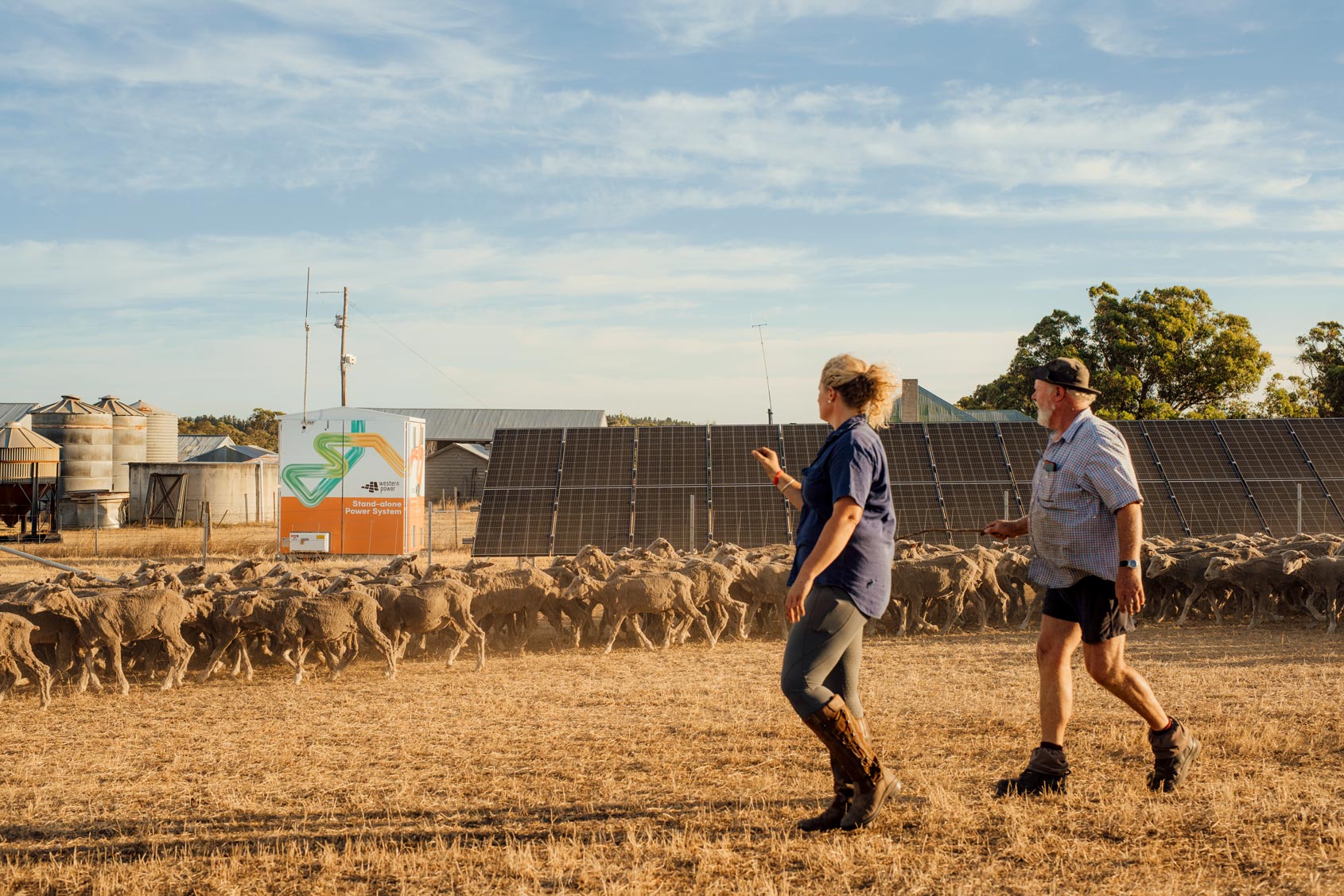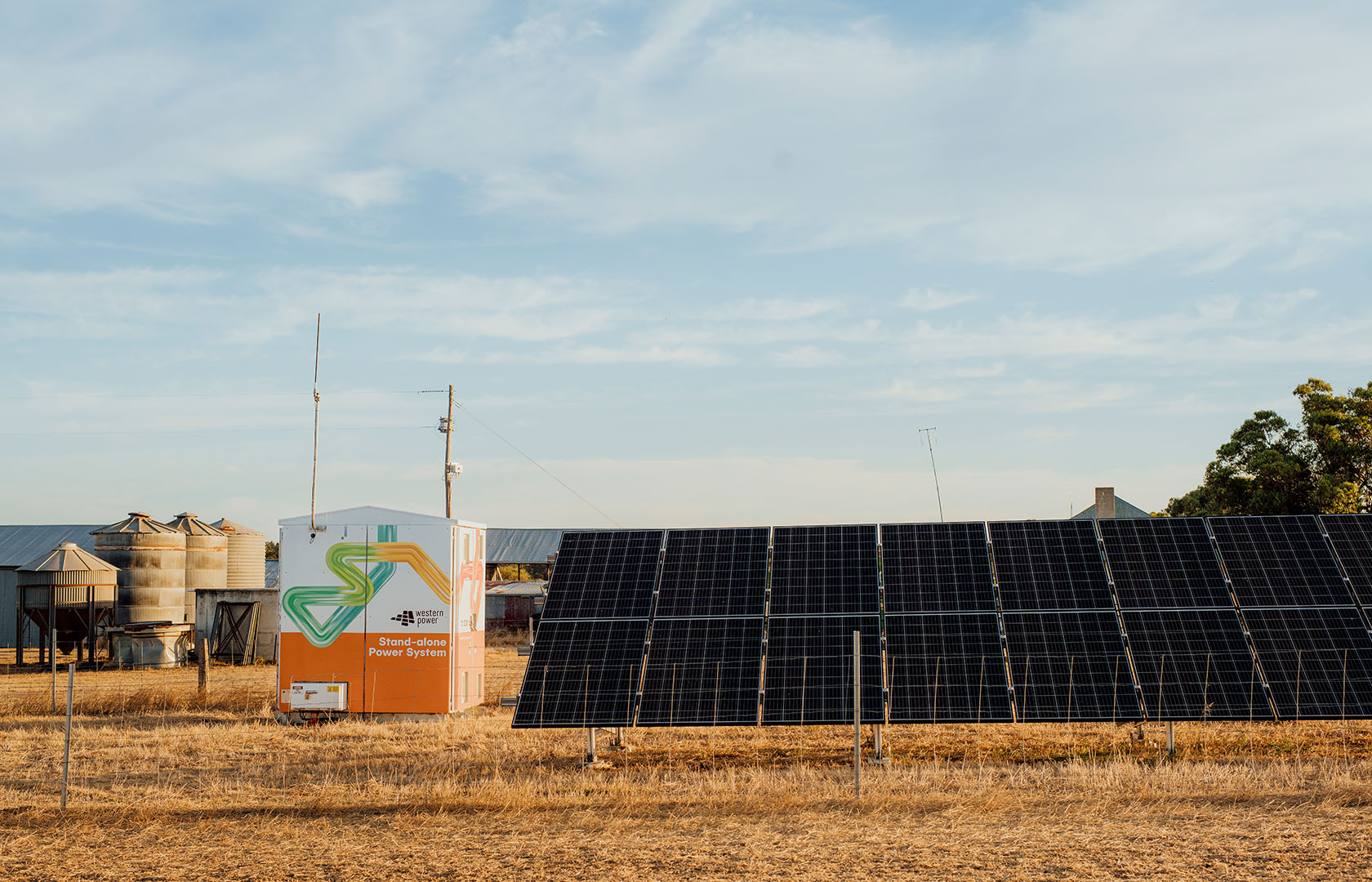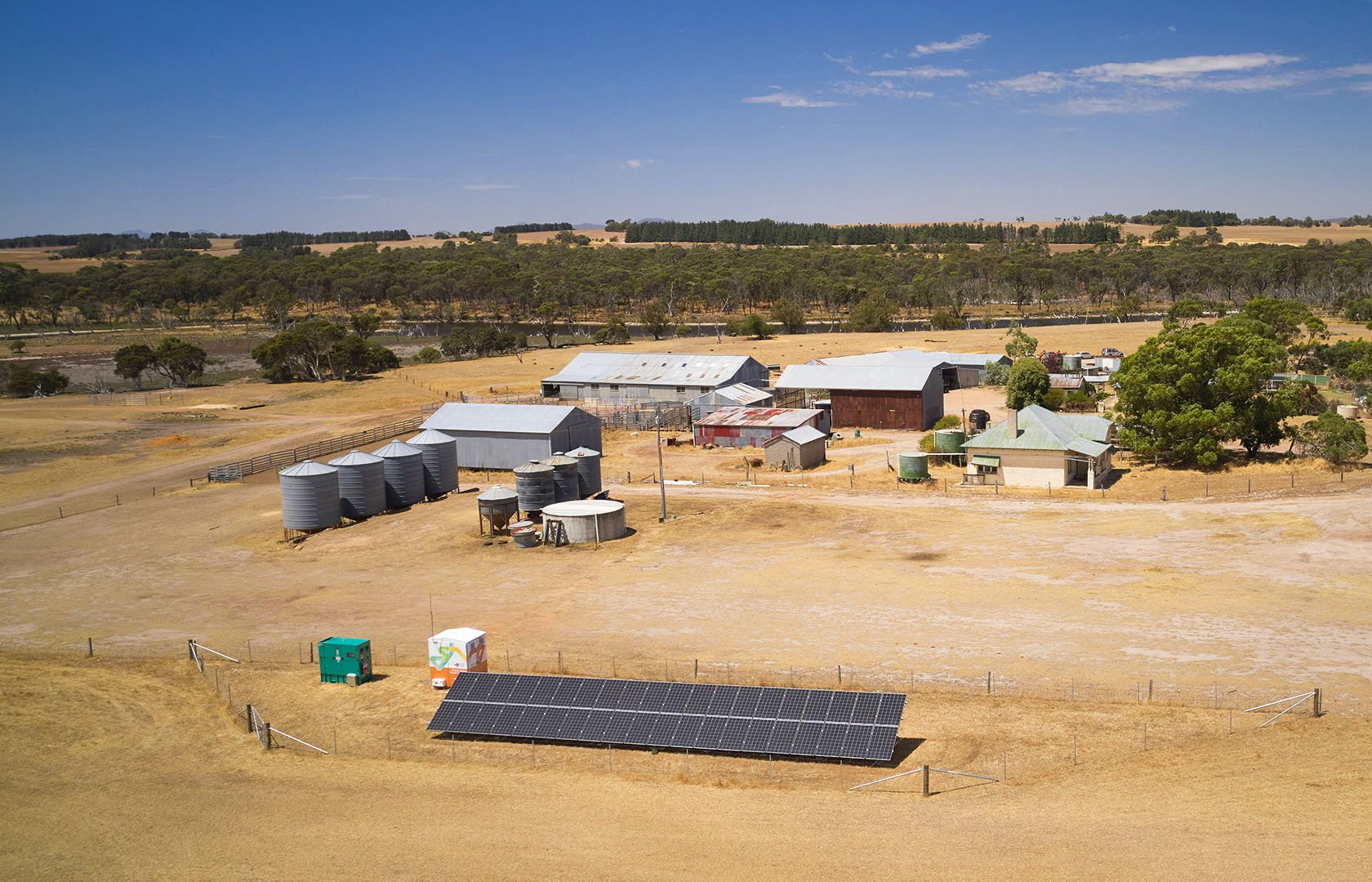The acceleration and fast adoption of stand-alone power systems (SPS) in regional WA is one of the best examples of how new technologies are transforming energy outcomes for customers and solving age-old problems.
When the first six SPS were installed back in 2016, it was hard to imagine that just a few short years later it would be the go-to technology for large swathes of regional areas in the SWIS.
Back then, the SPS program was an experimental pilot. The hope was that using the technology would improve the customer experience to properties at the end of long lines, who have long had issues with power reliability.
Fast forward just five years and SPS is becoming a business as usual (BAU) technology for Western Power and a key part of our modular grid network plan.

From the first six in the pilot, almost one hundred units have now been installed across regional areas of the SWIS, including 36 units which were deployed to customers following the destruction of cyclone Seroja. A global-leading industry around the supply and installation of the units is now growing here in WA.
And those poles and long wires that have long dotted and stretched across the vast expanses of regional Western Australia are now coming down, as their use becomes redundant where SPS are installed.
“It’s been a whirlwind few years,” says Margot Hammond, SPS Project Lead who has been with the SPS project since the pilot.
“When you sit back and reflect on the journey, it really is amazing that these quite simple units pack as much punch as they do.
“It’s been a game changer for those regional customers that have often experienced outages due to the difficulties of supplying power along long, long lines where a lot can go wrong.
“And they get to tap into our abundant sunshine and power their properties with more renewable power.”
Hammond says it’s been satisfying to see the SPS units go from pilot to ‘BAU’ within such a short timeframe.
“Since those first six properties near Ravensthorpe had their SPS units installed, we’ve estimated they’ve reduced the power outage time over five years from a likely 1000 hours to just 72 hours. It’s a remarkable improvement in power quality and supply, and so the more customers we can reach, and quickly, the better outcomes for everyone.”
Embraced by customers
While it’s been Western Power’s role to facilitate the roll-out of the units, including supporting local supply and installation businesses with skills and support, Hammond says the fast adoption can also be attributed to how customers are embracing SPS.
Properties like farms can be big power users, having to power up sheds, shearing and mechanical equipment, homes on the property and even electric fences.

Convincing farmers that these stand-alone units with solar panels could generate enough power for an entire shearing or welding set-up was one of the first challenges for the team.
“Power is such an essential service, no-one wants to risk not having it, we understood that,” says Hammond.
“So when we were talking to potential customers, we had to prove that the solar panels and batteries in a SPS unit, backed by a diesel generator, could generate enough power for a whole property. We’re really grateful to those first six properties that got involved with the pilot and worked with us to test out the technology and prove this could work.
“Those original pilot participants became great advocates for what we were doing, talking to others in the community about the SPS units. Given innovation and problem solving is innate in regional communities, and that the evidence for the performance and benefits of SPS units was so strong, the number of people interested in getting SPS units very quickly grew.”
SPS on the rise
Over the coming decade, Western Power is scheduled to install approximately 4000 SPS units, with a focus on properties where energy infrastructure is scheduled for significant maintenance.
Utilising SPS technology rather than replacing the traditional overhead infrastructure presents an opportunity provide a more reliable service at a lower cost.
It’s expected that over 50,000 power poles and 23,000km of conductor – a fire risk that are also the bane of farmers trying to crop around them in the middle of a paddock – will also be removed following the deployment of SPS units.
This scheduled roll out does not include those that may want SPS units and can now request to purchase an SPS unit for their property.
“Our understanding of SPS technology has matured to the point where we can offer, for a cost, SPS units to those that want them, outside of those being installed as part of the network maintenance.”
WA providers and the SPS industry here is also likely to play a lead role as SPS technology is adapted over east and in other parts of the world where the technology makes more cost, quality and energy access sense than traditional poles and wires infrastructure.
“WA is now one of the SPS hotspots in the world. We’ve had several other utilities coming to talk to us to tap into our knowledge, and our local providers are of SPS are poised to make the most of their expertise.
“It’s been a rapid change and technology maturation, and it’s very satisfying that the benefits are making such a big difference to a customer group that really needed better power quality.
“We thank them for getting on board and coming along this ride with us, as we couldn’t have done it without them.”

